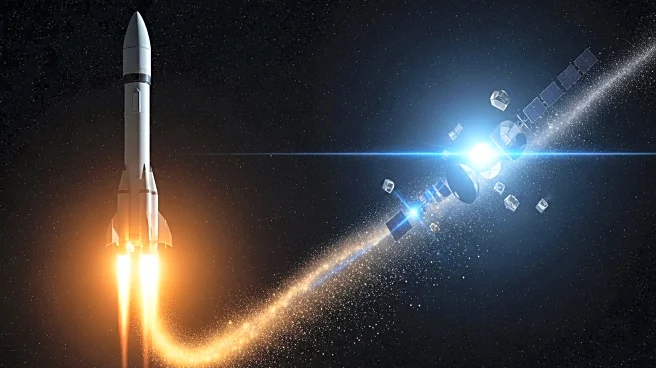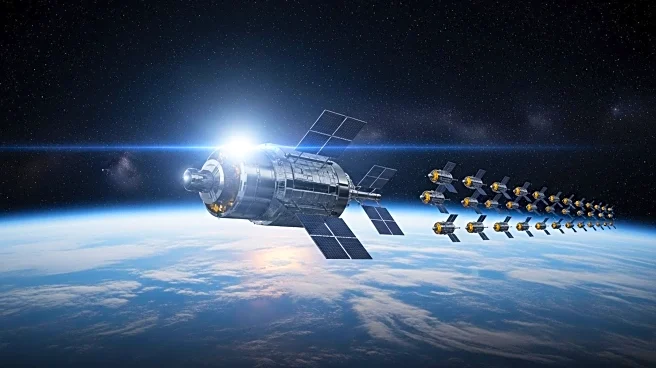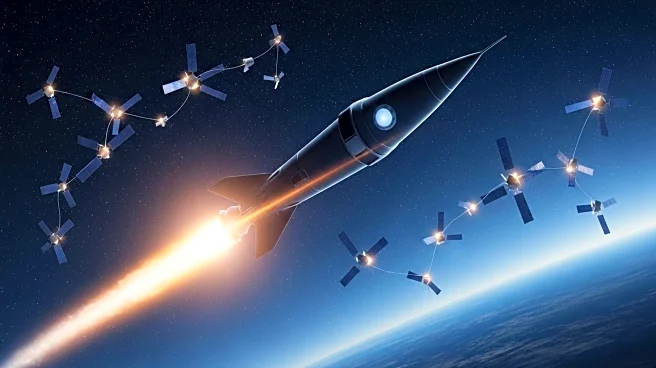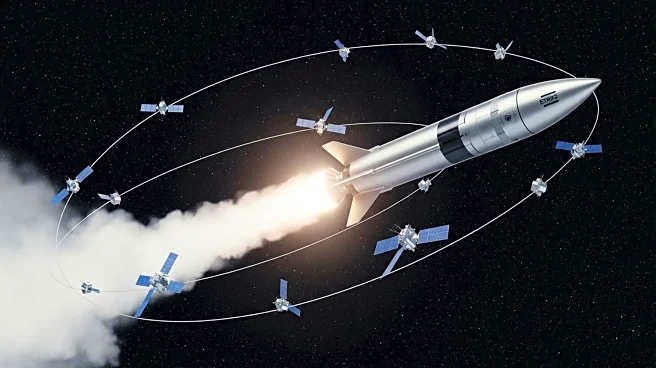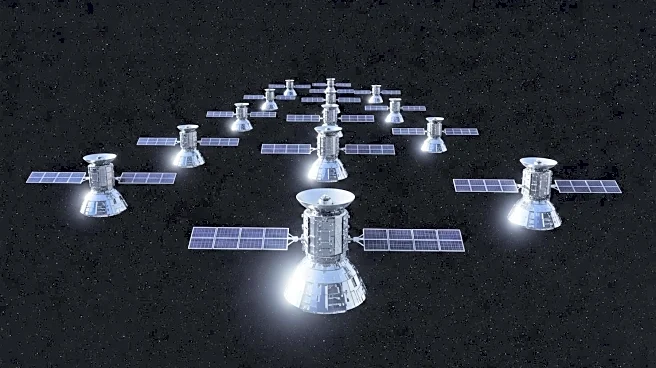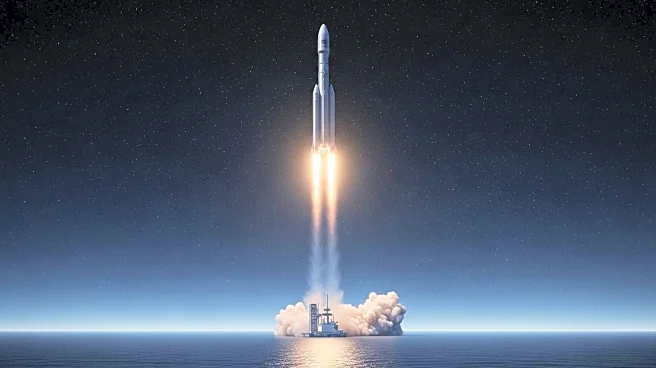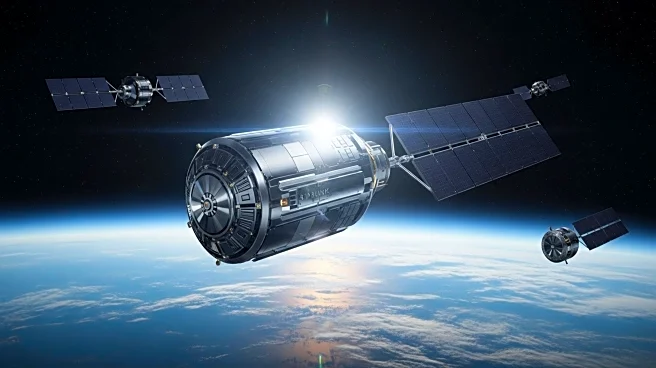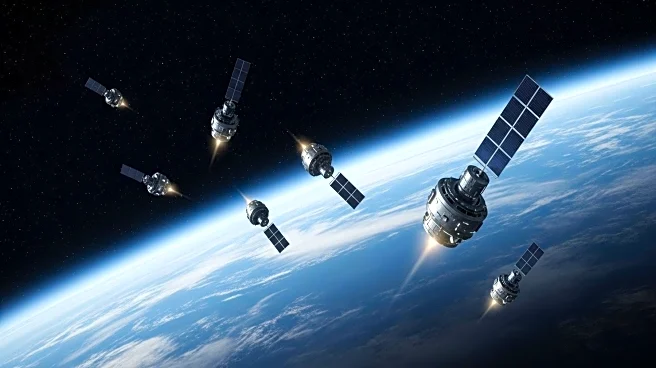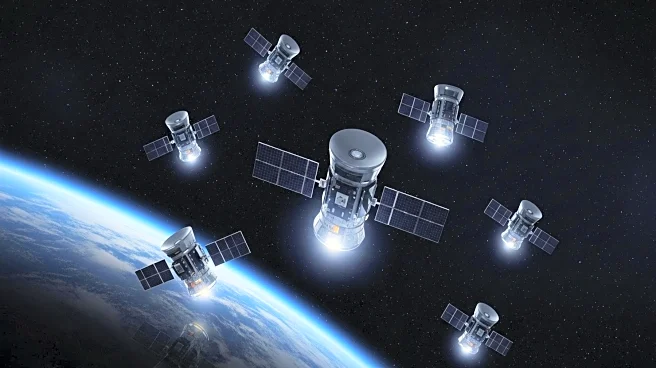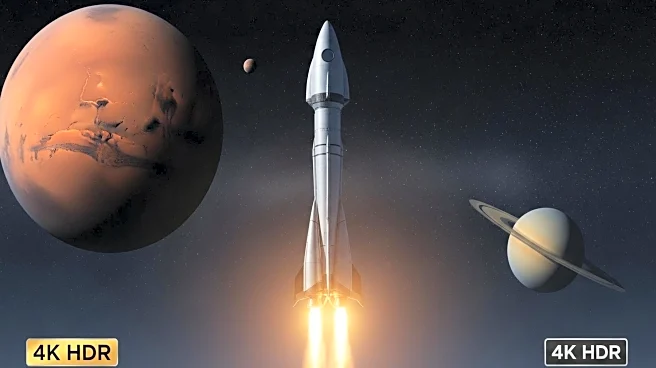What's Happening?
SpaceX successfully launched 28 Starlink satellites aboard a Falcon 9 rocket from Vandenberg Space Force Base in California. The launch occurred at 11:54 p.m. EDT on October 7, 2025. This mission marks the 127th Falcon 9 flight of the year, with over 70% dedicated to expanding the Starlink network, which is the largest satellite constellation ever assembled. The Falcon 9's first stage landed on the SpaceX drone ship 'Of Course I Still Love You' in the Pacific Ocean, while the upper stage continued to deploy the satellites into low Earth orbit. The Starlink constellation now comprises over 8,500 operational satellites, with more launches planned to continue its expansion.
Why It's Important?
The expansion of the Starlink satellite network is significant for global internet connectivity, particularly in remote and underserved areas. By increasing the number of operational satellites, SpaceX aims to enhance the coverage and reliability of its internet service. This development is crucial for bridging the digital divide and providing high-speed internet access worldwide. Additionally, the successful reuse of Falcon 9 boosters demonstrates SpaceX's commitment to cost-effective and sustainable space exploration, potentially lowering the cost of satellite deployment and increasing the frequency of launches.
What's Next?
SpaceX plans to continue launching additional Starlink satellites to further expand its network. The company is likely to focus on increasing the capacity and speed of its internet service, aiming to attract more subscribers globally. As the constellation grows, SpaceX may face regulatory challenges and competition from other satellite internet providers. The company will need to address concerns related to space debris and orbital congestion, ensuring the long-term sustainability of its operations.
Beyond the Headlines
The rapid expansion of the Starlink network raises questions about the impact on astronomical observations and the night sky. The increasing number of satellites may interfere with scientific research and contribute to light pollution. SpaceX has been working on solutions to mitigate these effects, such as implementing satellite designs that reduce reflectivity. The company's efforts to balance technological advancement with environmental and scientific considerations will be closely monitored by stakeholders.

